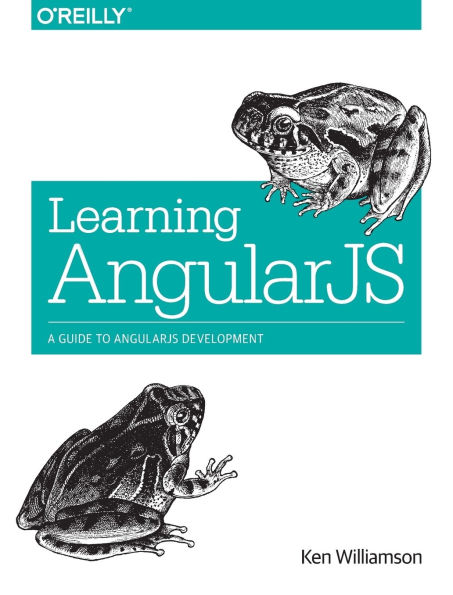Learning AngularJS: A Guide to AngularJS Development
With AngularJS, you can quickly build client-side applications that run well on any desktop or mobile platform, using REST web services for backend processes. You may have heard that the learning curve for this JavaScript MVC framework is too steep, but that’s not the case. This practical guide provides a hands-on approach to learning AngularJS that will have you building high-quality applications and websites in no time.
"1120736548"
Along with a conceptual understanding of the framework, you’ll also gain direct experience with AngularJS by building a sample application throughout the book. If you’re familiar with JavaScript, web development, and software design concepts and patterns, this book is the perfect way to get started.
- Understand how AngularJS differs from other MVC frameworks
- Learn about AngularJS controllers, views, and models by diving into the book’s sample project
- Connect your working application to public REST services
- Build the application’s security layer with non-REST AngularJS services
- Explore the basics of building and testing AngularJS directives
- Use AngularJS as part of the MEAN stack (MongoDB, ExpressJS, AngularJS, and Node.js)
- Discover how search engine optimization relates to AngularJS applications and sites
Learning AngularJS: A Guide to AngularJS Development
With AngularJS, you can quickly build client-side applications that run well on any desktop or mobile platform, using REST web services for backend processes. You may have heard that the learning curve for this JavaScript MVC framework is too steep, but that’s not the case. This practical guide provides a hands-on approach to learning AngularJS that will have you building high-quality applications and websites in no time.
Along with a conceptual understanding of the framework, you’ll also gain direct experience with AngularJS by building a sample application throughout the book. If you’re familiar with JavaScript, web development, and software design concepts and patterns, this book is the perfect way to get started.
- Understand how AngularJS differs from other MVC frameworks
- Learn about AngularJS controllers, views, and models by diving into the book’s sample project
- Connect your working application to public REST services
- Build the application’s security layer with non-REST AngularJS services
- Explore the basics of building and testing AngularJS directives
- Use AngularJS as part of the MEAN stack (MongoDB, ExpressJS, AngularJS, and Node.js)
- Discover how search engine optimization relates to AngularJS applications and sites
34.99
In Stock
5
1

Learning AngularJS: A Guide to AngularJS Development
209
Learning AngularJS: A Guide to AngularJS Development
209
34.99
In Stock

Product Details
| ISBN-13: | 9781491916759 |
|---|---|
| Publisher: | O'Reilly Media, Incorporated |
| Publication date: | 04/05/2015 |
| Pages: | 209 |
| Product dimensions: | 6.90(w) x 9.10(h) x 0.50(d) |
About the Author
From the B&N Reads Blog
